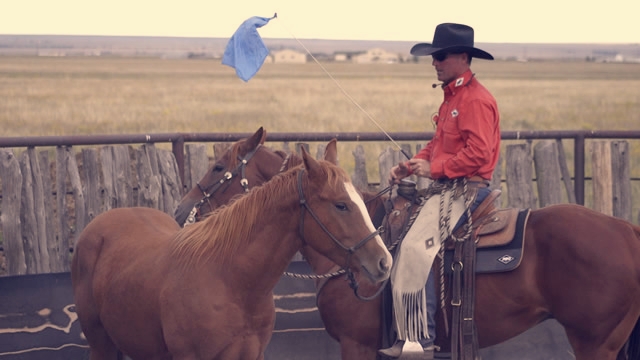Written by Martin Black
This article originally appeared in Eclectic Horseman Issue No.45
There is a lot of hype about “desensitizing” among horse people and some clinicians these days. They get the horse completely desensitized, then they have to sensitize him again to get him to operate.
In some cases, I see the horses getting very confused and irritated with this procedure. Why do they put the horse through all this? Why do they mislead the horse, letting him believe he can be comfortable accepting certain pressures, and then increase the pressures trying to get the horse to respond to the same pressures they just taught him to accept?
Personally, I don’t like to think that we should be trying to desensitize one of God’s creations that He has made so sensitive. Horses are very intelligent, naturally sensitive animals, and such high sensitivity is essential to their survival. It is not “Natural” for them to operate without it.
When the horse is a tool to a person who has no interest in understanding their horse or in becoming a better horseperson, it may make sense to bring the horse to the level of the person. But if the person is interested in the horse, the person should be helped and encouraged to rise to the level of the horse.
It is possible to develop a horse that is comfortable with us and his surroundings but still alert. We need to be safe; that should always be our first priority with horses, and then, we can have a productive lesson or get a job done. On this note, there is a certain amount of “desensitizing” that needs to take place to help a horse “accept” a blanket, saddle, or us touching them with our hands. But any more than what is needed to get the horse comfortable and confident is going beyond a safety requirement. After the horse accepts a certain object or pressure, we should leave it alone. This doesn’t mean that you won’t ever need to revisit it; there isn’t a life time guarantee he will always accept it. There are always cases when something that is usually familiar to the horse is surrounded by different circumstances and may cause the horse’s self-preservation to be triggered. When we detect discomfort, such as confusion, frustration, anxiety, or fear, then we need to defuse this by reassuring the horse and helping him to be more confident. This is what we as horse people need to be aware of and practice watching for, allowing the horse his God-given need for self-preservation. Let the horse be a horse, and understand the horse as a horse.
Just as there are certain responsibilities, experience, and requirements that go along with getting a driver’s license, a person should accept the same responsibility when working with horses.
If we take all the self-preservation away from a horse, what do we have to motivate him besides excessive pressure? A horse’s main objective in life is to be comfortable, physically and mentally. We have no right to dull him to the point that it requires excessive pressure and discomfort to get him to respond, when his natural instinct is to be responsive and sensitive in the first place.
Anyone can go to a colt starting clinic or see a demonstration, live or on TV, and learn how to desensitize a horse. This may work if you are training lawn ornaments. But when it comes time for the horse to go do something, where is the motivation going to come from? How is the relief and pressure going to apply when he has been conditioned to ignore so much?
People like to think they are more intelligent than the horse. If this is true, they should be able to rise to the horse’s level of sensitivity and intuition instead of “desensitizing” the horse to their level.
An important message that Tom Dorrance impressed on me was to “Recognize the horse’s need for self-preservation, and do not take it away from them.” He encouraged me to “Learn to allow the horse to maintain their self-preservation and still operate for a person.”
We need to understand this if we are going to gain the horse’s confidence on a level that he can really be with us.
This article originally appeared in Eclectic Horseman Issue No.45


